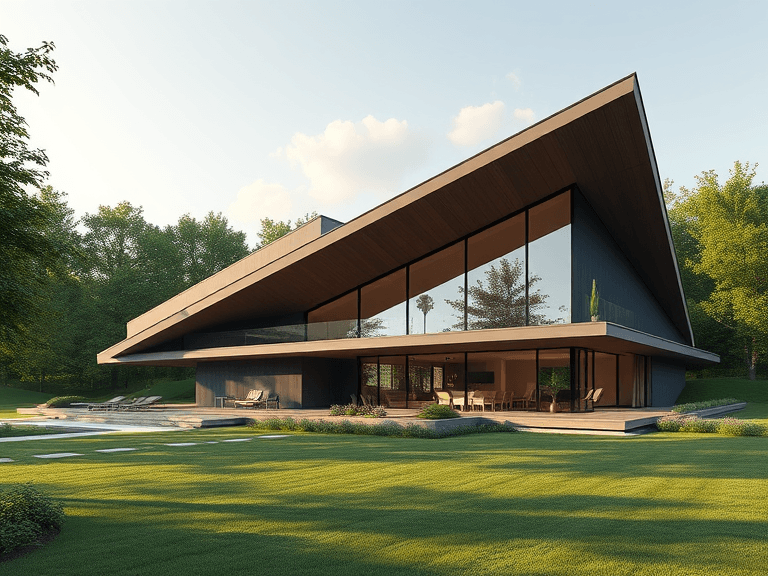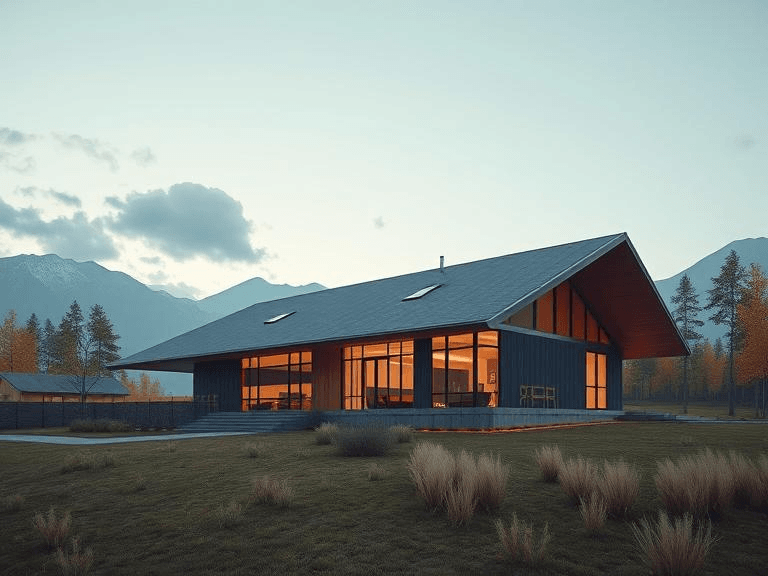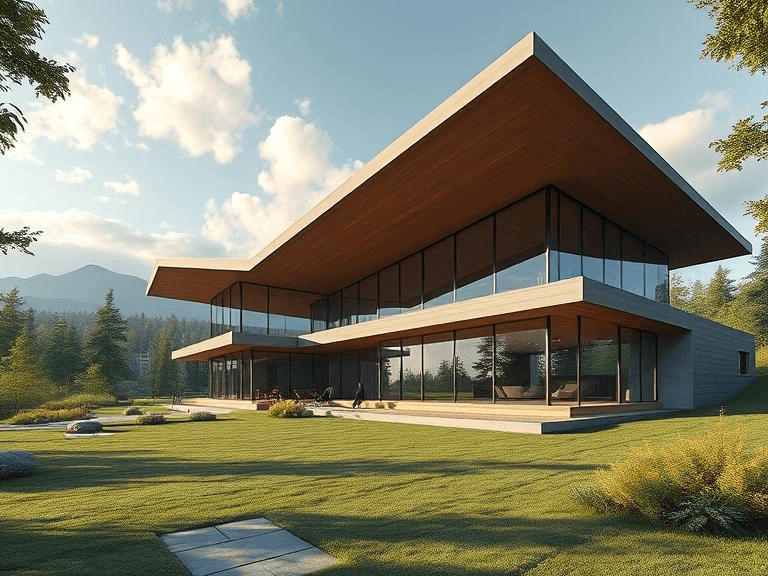
Roofing materials play a crucial role in the overall construction and durability of a building. Selecting the appropriate material requires careful consideration of various factors, including climate, budget, aesthetics, and longevity. Among the traditional options available, asphalt shingles, wood, and tile are commonly used for residential structures. Each of these materials has its unique qualities, advantages, and disadvantages.
Asphalt shingles are perhaps the most widely utilized roofing material today due to their cost-effectiveness and ease of installation. They are available in a variety of colors and styles, which enable homeowners to customize the appearance of their roofs. However, while they are generally affordable, their lifespan typically ranges from 15 to 30 years, which may necessitate replacements more often than with other materials.
Wood shakes and shingles are another appealing traditional option, offering a natural aesthetic that significantly enhances a home’s curb appeal. These materials are also energy efficient and provide excellent insulation. However, they require regular maintenance to prevent rot, mold, and insect infestations, and their longevity can be affected by weather conditions.
Tile roofing, particularly clay and concrete tiles, is known for its exceptional durability and fire resistance. They can last for over 50 years if properly maintained, making them a long-term investment. However, tile roofing can be heavy and may require additional structural support, which can raise installation costs.
In recent years, metal roofing has emerged as a contemporary choice, presenting an alternative to traditional materials. Metal roofs are becoming increasingly popular due to their sustainability, energy efficiency, and long lifespan, often exceeding 50 years. This comparison of metal roofing vs other roofing materials addresses the benefits and considerations of each option, enabling homeowners to make informed decisions based on their specific needs and preferences.
Overview of Metal Roofing
Metal roofing is a distinctive choice in the realm of roofing materials known for its unique properties and advantages. Composed predominantly of metals such as steel, aluminum, and copper, it has gained popularity due to its remarkable durability and longevity compared to other roofing materials. The composition of metal roofing significantly influences its performance and applicability in various climate conditions, making it a formidable option for many homeowners.
Among the different types of metal roofing, steel stands out as one of the most widely used materials. Steel roofing typically includes a zinc coating to prevent rust, making it particularly suitable for regions experiencing fluctuating weather conditions. In contrast, aluminum roofing is lightweight and resistant to corrosion, lending itself well to coastal environments where exposure to saltwater can accelerate the decay of other material types. Copper roofing, though more expensive, offers a luxurious aesthetic and can develop a protective patina over time, enhancing its durability.
One of the most significant benefits of metal roofing is its resilience; it can withstand severe weather including high winds, heavy snowfall, and hail. Moreover, metal roofs are exceptionally energy-efficient. Their reflective nature aids in reducing heat absorption, resulting in lower cooling costs during hot months. Additionally, the sustainability aspect of metal roofing is noteworthy, as many metal products are made from recycled materials and are themselves recyclable at the end of their life cycle. This contributes positively to environmental conservation compared to traditional asphalt shingles and other roofing options, which often end up in landfills.
Given these distinct features, metal roofing stands out in the comparison of metal roofing vs other roofing materials, proving to be a sound investment for those prioritizing longevity, sustainability, and energy efficiency.
Durability: Metal vs Other Materials
When evaluating the durability of roofing materials, metal roofing stands out as a formidable option compared to traditional roofing materials such as asphalt shingles, wood, and tiles. The lifespan of metal roofing typically ranges from 40 to 70 years, depending on the specific type of metal used and the installation quality. In contrast, asphalt shingles have an average lifespan of approximately 15 to 30 years, while wood roofs may only last between 20 to 25 years. This significant difference highlights metal roofing’s advantage in long-term investment.
Metal roofing also excels in its resistance to various weather conditions, including high winds, hail, and snow. Most metal roofs are designed to withstand wind speeds of up to 140 miles per hour, making them extraordinarily resilient during storms. In comparison, asphalt shingles may become dislodged or damaged in high winds, while wood can rot when exposed to excess moisture or severe weather. Furthermore, metal roofs reflect sunlight, which can help reduce heat absorption, thus preventing damage related to thermal expansion and contraction.
The structural integrity of metal roofing is another vital aspect when comparing it with other materials. Metal roofing panels are typically lightweight yet robust, allowing them to endure heavy snowfall without collapsing. Many metal roofing systems are engineered to minimize leaks by using concealed fasteners, which provide a more secure seal against weather infiltration. Additionally, while wood and asphalt may suffer from the effects of moisture, leading to mold and degradation, metal does not harbor such vulnerabilities, ensuring its durability over time.
Through these comparisons, it is clear that metal roofing vs other roofing materials reveals a superior choice regarding long-lasting performance and environmental resilience. This durability positions metal roofing as a reliable option for homeowners seeking peace of mind and value in their roof investment.

Cost Analysis: Initial Investment and Long-term Savings
When considering the adoption of metal roofing versus other roofing materials, one pivotal factor to assess is the cost, which encompasses both initial investment and long-term savings. The initial cost of installing metal roofing can be higher than traditional materials such as asphalt shingles or wood. On average, homeowners can expect to pay between $5 to $12 per square foot for metal roofing, depending on the type and finish. In contrast, asphalt shingles typically range from $1 to $4 per square foot, making them an attractive option for those prioritizing immediate savings.
However, the longevity of metal roofing plays a crucial role in its overall value. Metal roofs can last up to 50 years or longer with minimal maintenance, whereas asphalt shingles may only endure for 15 to 30 years. This longevity means that while the upfront cost is greater, metal roofing can deliver significant savings over time through reduced replacement expenses. Furthermore, metal roofs are often warrantied for 50 years or more, providing further assurance of long-term economic benefits.
Maintenance costs also factor into the financial equation. Metal roofing generally requires less upkeep compared to other materials. For example, asphalt shingles may necessitate regular inspections and replacements due to potential wear and tear from UV radiation, wind, and moisture. In contrast, metal roofing, being resilient against these elements, translates to lower maintenance expenses over its lifespan.
Energy efficiency is another cost-saving aspect to consider. Many metal roofs reflect sunlight, which can contribute to decreased energy bills by maintaining cooler indoor temperatures during the summer months. Studies indicate that homes with metal roofs can experience energy savings of 10-25% compared to those with conventional shingles.
In conclusion, when analyzing metal roofing vs. other roofing materials, it is vital to weigh the initial investment against long-term savings. While the upfront costs may be higher, the durability, reduced maintenance needs, and energy efficiency of metal roofing present a compelling financial case over time.
Energy Efficiency and Environmental Impact
When considering metal roofing vs other roofing materials, one significant aspect that stands out is energy efficiency. Metal roofs possess reflective properties that help in reducing heat absorption. This characteristic allows homes equipped with metal roofing to remain cooler in hot weather, thereby decreasing reliance on air conditioning systems. As a result, homeowners experience lower energy costs over time, making metal roofs an economically sensible choice.
In contrast, traditional roofing materials, such as asphalt shingles, often absorb heat, which can lead to higher indoor temperatures and increased energy consumption. This difference reveals a crucial factor in the decision-making process for homeowners evaluating metal roofing vs other roofing materials. The energy efficiency of metal roofs not only contributes to individual savings but also has broader implications for reducing overall energy demand on a communal and national scale.
Beyond energy efficiency, the environmental impact of roofing materials is of paramount importance in today’s eco-conscious society. Metal roofing is typically manufactured from recycled materials, making it a sustainable option compared to other materials that may require more raw resources for production. Moreover, metal roofs tend to have longer lifespans, further decreasing the need for replacements and minimizing waste. At the end of their lifespan, metal roofs can be fully recycled, thus redirecting them from landfills. This lifecycle advantage underscores the sustainable nature of metal roofing in the context of environmental impact.
In conclusion, the benefits of metal roofing extend beyond mere aesthetic choices; they encompass significant energy efficiency and environmentally friendly properties. The reflective qualities of metal roofs contribute to lower energy costs, while their sustainable manufacturing processes highlight a commitment to lessening ecological footprints. Ultimately, the comparison of metal roofing vs other roofing materials illustrates metal’s advantages in both energy savings and environmental stewardship.
Aesthetic Appeal: Variety and Customization
When considering a roofing option, aesthetic appeal is a significant factor for homeowners and builders alike. Metal roofing has evolved considerably over the years, offering an extensive array of styles, colors, and finishes that cater to diverse architectural designs. Compared to other roofing materials, metal roofs can be highly customizable, allowing property owners to match their home’s exterior seamlessly.
One of the standout features of metal roofing is its versatility. Available in various styles, including standing seam, corrugated, and metal shingles, metal roofs can suit traditional, modern, and contemporary looks. Homeowners can choose from a rich palette of color options to enhance the aesthetic value. With options ranging from classic reds and greens to more muted tones like grays and browns, there is a suitable color for every exterior design. Furthermore, advanced coatings and finishes are available, providing additional protection while offering gleaming appearances or textured looks that mimic other materials, such as slate or tile.
In contrast, traditional roofing materials like asphalt shingles or clay tiles may offer limited options in terms of aesthetics. While these materials can provide basic coverage, they often lack the diversity and sophistication found in metal roofing. Additionally, the longevity and durability of metal allow it to maintain its aesthetic qualities over time, resisting fading from sun exposure and damage from environmental factors. This durability contributes to its appeal, as homeowners can expect their roofing to remain visually appealing for decades without significant maintenance.
Ultimately, when evaluating metal roofing vs. other roofing materials, the aesthetic appeal cannot be overlooked. Its variety, customization options, and consistent performance combine to create a visually pleasing result that enhances the overall attractiveness of a building.
Installation Processes: Ease and Expertise Required
The installation process for roofing materials plays a significant role in determining their overall suitability for residential properties. When comparing metal roofing vs other roofing materials, it’s essential to assess the ease of installation and the level of expertise required for each. Metal roofing systems can vary greatly based on the type of material chosen, such as steel, aluminum, or zinc, and each requires specific installation techniques.
Typically, metal roofs are lighter than traditional materials like asphalt shingles or concrete tiles. This can lead to simpler installation procedures, as the structural support required for heavier materials is often less stringent. However, the installation of metal roofing often necessitates skilled labor familiar with the unique characteristics of the material, such as thermal expansion and contraction, which can pose challenges if not adequately managed. Homeowners should expect a professional installation process that may take anywhere from one to several days, depending on the size and complexity of the roof.
In contrast, traditional roofing materials like asphalt shingles generally have a more straightforward installation process. Many contractors are experienced with these systems, leading to quicker installation times that can sometimes be completed within a day or two. However, while the initial installation might appear easier, it is crucial to consider the long-term maintenance and durability. Traditional roofing materials may require more frequent repairs or replacements, especially in harsh weather conditions, which could outweigh their initial ease of installation.
Ultimately, the choice between metal roofing vs other roofing materials should consider installation procedures along with long-term implications. While metal roofs might demand more specialized expertise, their longevity, energy efficiency, and minimal maintenance often prove beneficial in the long run, making them a compelling option for homeowners seeking an enduring roofing solution.
Maintenance Requirements: Long-term Care for Roofing
When considering metal roofing vs other roofing materials, it is crucial to examine the maintenance requirements associated with each. Metal roofs are renowned for their longevity and durability, which translates into lower maintenance needs over time. Generally, metal roofing can last 40 to 70 years, significantly outperforming other materials such as asphalt shingles, which typically require replacement every 15 to 30 years. Regular inspections and maintenance for metal roofs are straightforward, often requiring little more than an annual check for debris accumulation and potential corrosion.
In contrast, other roofing materials often demand more frequent and varied maintenance. For instance, asphalt shingles may require regular inspections to identify curling, cracking, or missing pieces and must be cleaned to prevent moss or algae buildup. Additionally, wood shingles and shakes necessitate treatment with preservatives to prevent decay and insect infestations, thus increasing maintenance frequency. This difference in upkeep can lead to higher long-term costs for homeowners investing in traditional roofing materials.
Metal roofs typically require only minor maintenance tasks. Cleaning the roof surface and maintaining gutters to ensure proper drainage are generally sufficient. Some metal roofing systems come with protective coatings that enhance resistance against rust and fading, further reducing the need for frequent maintenance. Conversely, tiles and synthetic roofing materials may be more labor-intensive and costly, as they often require more complex repairs and periodic replacement of damaged tiles or shingles.
Ultimately, when weighing metal roofing vs other roofing materials, it becomes evident that the lower maintenance requirements of metal roofs present a significant advantage. With proper installation and occasional upkeep, homeowners can enjoy the durability and longevity of metal roofing, making it a worthwhile investment for long-term care.
Conclusion: Making an Informed Choice
As homeowners consider their roofing options, the comparison of metal roofing vs. other roofing materials becomes increasingly significant. Throughout this discussion, we have explored various crucial factors that influence the choice of roofing, such as cost, longevity, maintenance requirements, and aesthetic appeal. Each material presents unique advantages and disadvantages that cater to different priorities and preferences.
Metal roofing stands out for its remarkable durability and long lifespan, often exceeding that of traditional materials such as asphalt shingles or wood. While the initial investment may be higher, many homeowners find that the long-term savings on maintenance and replacement costs justify the expenditure. Furthermore, metal roofing’s ability to withstand harsh weather conditions—ranging from heavy snow to high winds—offers an added layer of protection that is appealing to many. Additionally, its energy-efficient properties can significantly reduce heating and cooling costs, further enhancing its value as compared to other roofing options.
However, aesthetics play a pivotal role in the selection process as well. Some homeowners may prefer the classic look of slate or tile over the modern appeal of metal. Therefore, it is essential for individuals to evaluate their personal style and the architectural requirements of their home when weighing metal roofing vs. other roofing materials.
Ultimately, the decision regarding roofing materials should reflect a careful consideration of individual needs and preferences. Factors such as budget constraints, local climate conditions, and design aspirations are paramount in guiding this choice. By understanding the distinct characteristics of each option, homeowners can make an informed decision that aligns with their specific circumstances, ensuring satisfaction and durability for years to come.


